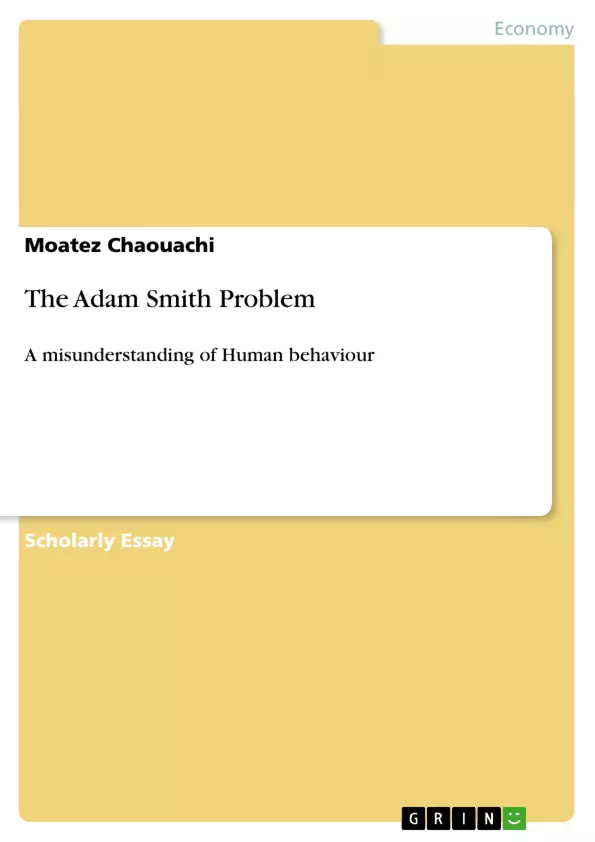In Wealth of Nations, Smith vehemently cited that economic practices were motivated by the principle of self-interest. On the other hand, Smith argued that economic behaviour was mainly determined by sympathy, a sentimental phenomenon that is prominent in the Theory of Moral Sentiments. As such, these two works present a moral dilemma as to whether the human behaviour in economy is motivated by self-interests or sympathy. In effect, the Adam Smith Problem revolves around the presumption that economic behaviour is driven by both social interest of benevolence and private interest of self-love. This paper presents a critical analysis of this problem. In details, the paper seeks to determine the extent to which the problem is based on a misunderstanding of human behaviour.
Inhaltsverzeichnis (Table of Contents)
- Introduction
- The Adam Smith Problem as a Misunderstanding of Human Behaviour
- The Coexistence of Self-Interest and Sympathy
- The Role of Competition in Dissolving Self-Interest
- Enlightened Self-Interest and Sympathy
- Conclusion
Zielsetzung und Themenschwerpunkte (Objectives and Key Themes)
This paper critically analyzes the Adam Smith Problem, which arises from the perceived contradiction between his views on self-interest in The Wealth of Nations and his views on sympathy in The Theory of Moral Sentiments. The paper aims to demonstrate that this perceived contradiction stems from a misunderstanding of human behaviour.
- The Adam Smith Problem: Contrasting views on self-interest and sympathy
- The role of sympathy in guiding self-interest
- The coexistence of self-interest and sympathy in human behaviour
- The influence of competition on self-interest in a free market
- The concept of "enlightened self-interest" and its implications for social interactions
Zusammenfassung der Kapitel (Chapter Summaries)
- Introduction: This chapter introduces the Adam Smith Problem, outlining the apparent contradiction between his views on self-interest and sympathy. It highlights the debate surrounding these two concepts and sets the stage for a critical analysis of the problem.
- The Adam Smith Problem as a Misunderstanding of Human Behaviour: This chapter argues that the Adam Smith Problem is based on a misunderstanding of human behaviour. It cites various theorists, including Montes and Chalmers, who suggest that self-interest and sympathy are not mutually exclusive but rather coexist and complement each other.
- The Coexistence of Self-Interest and Sympathy: This chapter delves into the nature of human behaviour, exploring how self-interest and sympathy can coexist and influence each other. It draws on Smith's own arguments to show that pursuing self-interest does not necessarily preclude experiencing sympathy and vice versa.
- The Role of Competition in Dissolving Self-Interest: This chapter examines the role of competition in a free market as a moderating force on self-interest. It argues that competition ultimately encourages balanced transactions and considerations of all stakeholders' interests.
- Enlightened Self-Interest and Sympathy: This chapter explores the concept of "enlightened self-interest," which emphasizes the role of empathy and consideration for others in shaping individual preferences. It argues that this notion encapsulates the idea that individuals are capable of making decisions that benefit both themselves and others.
Schlüsselwörter (Keywords)
The primary keywords and focus topics of this text include Adam Smith Problem, self-interest, sympathy, moral sentiments, The Wealth of Nations, The Theory of Moral Sentiments, enlightened self-interest, human behaviour, competition, free market, and economic philosophy.
- Quote paper
- Moatez Chaouachi (Author), 2012, The Adam Smith Problem, Munich, GRIN Verlag, https://www.grin.com/document/197628



